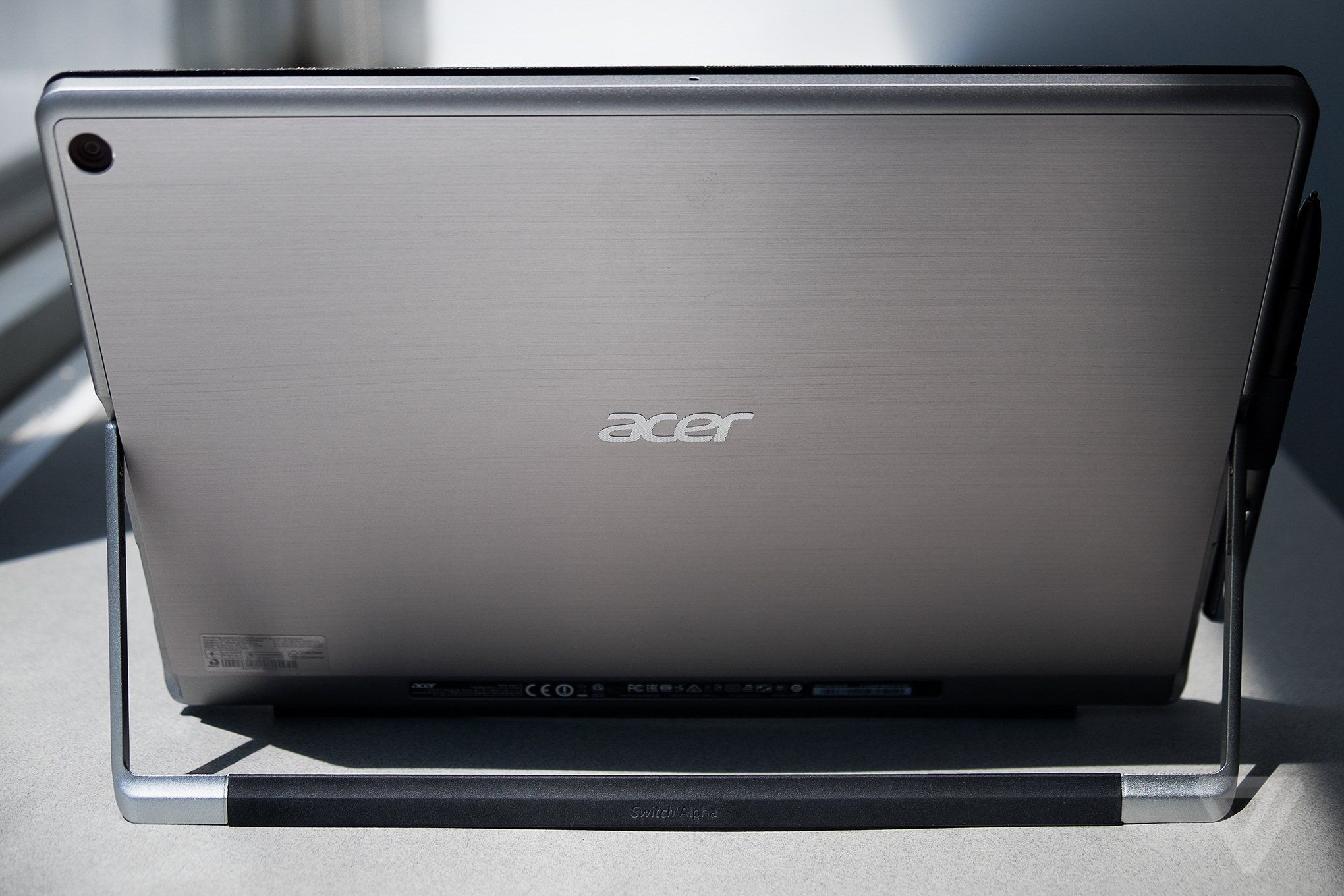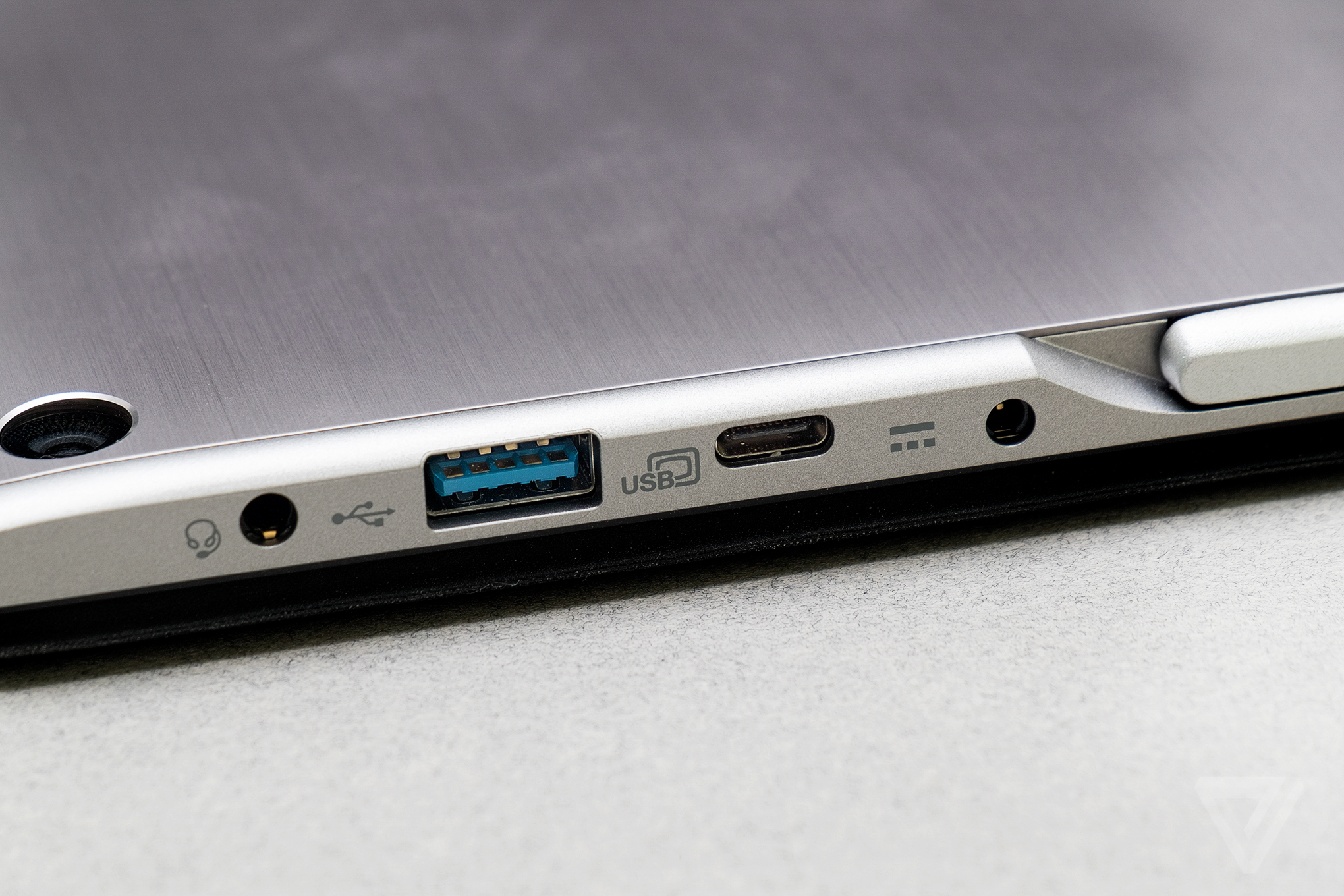At first glance, Acer’s Aspire Switch Alpha 12 looks very much like a me-too device. It’s a Microsoft Surface clone running Windows 10, albeit with a slightly different kickstand and a clever way of cooling itself (liquid, instead of fans). So when I started using it a couple weeks ago, I fully expected that the title of this review would end up being something along the lines of "Sure, why not?"
But my first glance was wrong — or rather, I was looking at the wrong thing. When most people walk into a Best Buy (or a Costco, which has a special bundle on this tablet), the thing they see first is obvious: the price. The Switch Alpha 12 is cheap, coming in as low as $699 for a decently specced model. That’s midrange laptop territory, not "fancy convertible tablet / laptop hybrid with a touchscreen and removable keyboard" territory.
So yes, I shrugged at the Alpha 12, then I used it and shrugged some more: it’s fine, good even, a perfectly serviceable device that does the jobs I expect it to do. But it’s hard to shrug off the price, which (depending on your options) ends up being 500 bucks less than the Surface it’s so clearly modeled after.

The Switch Alpha 12 has a 12-inch touchscreen that’s really quite nice. The resolution is 2160 x 1440, slightly less than the Surface Pro 4’s, but not enough to make a huge difference. More importantly the screen is bright and vibrant, even outdoors (though, of course, it’s reflective as all get out in direct sunlight). The model I’m testing has a Core i5 processor, 256gb of storage, 8gb of RAM, and an included stylus which sells for $699 at Costco, though prices on various models can vary widely depending on where and when you look. It is plenty powerful for most light computing tasks and even good enough for serious photo editing in a pinch.
As I said above, it’s a Surface clone, which at this point should tell you a few things: mainly that it is a tablet computer with a kickstand and a removable keyboard. The kickstand has a decently strong hinge and a rubberized bottom to help keep it stable at any angle. This is a setup that is really common now, and it has all the benefits and drawbacks that have been discussed ad nauseam: it’s not great on your lap, it’s fiddly to pick up when you have the keyboard attached, anything you plug into it will be hanging off the side in an awkward way.
The keyboard is also Surface-like. It attaches to the bottom with magnets and can either be laid flat or attached to the screen (with more magnets) at a more comfortable typing angle. The touchpad isn’t quite as large as I’d like, but it’s fast and accurate (even in Chrome). I don’t want to get too far ahead of myself here, but if a budget machine like this can have a decent trackpad, maybe the days of Windows computers failing constantly in that department might finally be behind us (maybe).
Typing on the keyboard is comfortable, but the standard version is not backlit, which is a bummer. Acer also decided to cram in Page Up and Page Down next to the arrow keys, which was annoying because I constantly hit them when I was moving the cursor around. Whatever, though: the keyboard is full-sized, quiet, and has good key travel. It does the job. But the best part? It’s included in the box, unlike with Microsoft’s Surface which demands a $130 premium for its keyboard. (There’s an optional stylus that’s not included at most retailers, which costs $50.)
Every Windows computer lately has to have some kind of differentiating gimmick, and this time around it’s liquid cooling. There are no fans on this machine even though it’s using the more powerful laptop-class of Intel’s processors. The back of the tablet can get a pretty warm, so if you’re using it as a tablet outside you will sometimes find it uncomfortable to hold. I used it in the sun for an hour and the back was too hot to use, but indoors or in the shade it’s fine. Even so, it’s nice to have a reasonably powerful computer without fans, but I don’t know that it should be the main thing you’re thinking about when you’re buying a computer.

Convertibles like this often skimp on ports, but Acer did a decently good job here: there’s one USB-A port, a USB-C that you can use for USB-C things like a display (or even powering the laptop), and a typical Acer power adapter port with a tiny round plug. Why Acer didn’t just use a second USB-C port instead for power is a mystery.
Another mystery: the inclusion of a microSD card slot for expansion. Microsoft does this on the Surface, as well, and I just find it difficult to believe a ton of people are really using these tiny cards on a regular basis in their laptops. There are two speakers above the screen, they sound, well, not great. But I never have high expectations in that department. One nice bit for tablet-users: a honest-to-god physical Windows button.
So far, so good! It’s an inexpensive tablet computer that is able to do the stuff you’d expect from a tablet computer. Now, the bad: battery life. It’s pretty awful. I decided to use the Walt Mossberg Battery Test™: binge-watch The West Wing in the Windows 10 Netflix app, while doing some browsing and light work on the side. The Switch Alpha 12 barely hit four and a half hours in that test, which is basically unacceptable.
Also not cool: the amount of preinstalled crap on this computer. It’s standard practice for PC makers to subsidize the cost of budget machines with lots of third-party software, and Acer has certainly done so here. There’s the usual McAfee anti-virus, MusicMaker Jam, WildTangent, and Acer’s own set of utilities. It’s certainly not a disaster and most of it (save McAfee) isn’t in your face, but it’s still frustrating if you don’t want any of this stuff.

Somehow, the PC market seems to be experiencing a small comeback here in the US. It’s not a massive uptick in sales and it may not last (and it may mostly be Chromebooks), but it’s perhaps enough to start paying attention again. While Mac users wait for Apple to finally get around to refreshing its lineup, Windows 10 devices feel like they’re finally hitting their stride. HP’s new Spectre laptop is a beautiful (if polarizing) piece of machinery, Dell’s XPS 13 has gone from an innovative new laptop to a reliable mainstay. And though the Surface Book and Surface Pro 4 haven’t quite lived up to Microsoft’s lofty expectations, they’re still really good computers.
And so it’s in that context that we should look at the Switch Alpha 12: it’s not trying to change the world and it’s not introducing a revolution in form factors. It’s just a steady, decent convertible in a market that has (for now) found an equilibrium. It’s like a particle you’d predict in quantum physics: you know it should be there and once you look for it, there it is.
Here it is: the Switch Alpha 12 is the inexpensive version of Microsoft’s Surface. It’s way cheaper but gives you almost all of the same benefits. If the battery life were better, I wouldn’t think twice about recommending it to somebody who’s interested in this style of computer. But mainly, I’m just sort of gratified that an inexpensive convertible like the Switch Alpha 12 exists. Because the whole idea of Windows 10 is to offer a wide array of options at every price point to consumers, and this device is a better option than I expected.
Photography by Chris Welch.
No comments:
Post a Comment